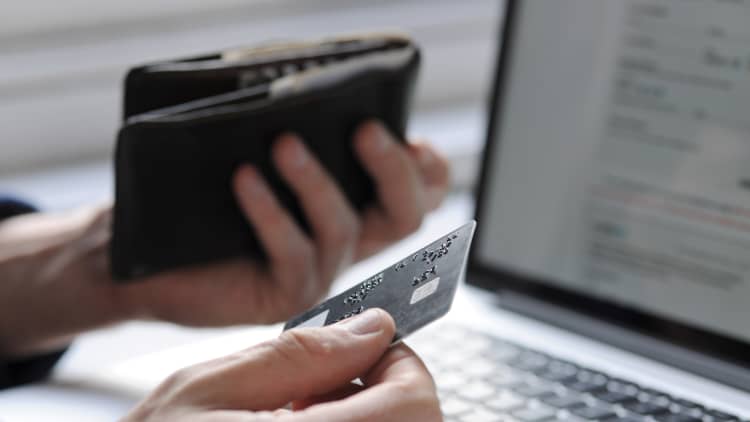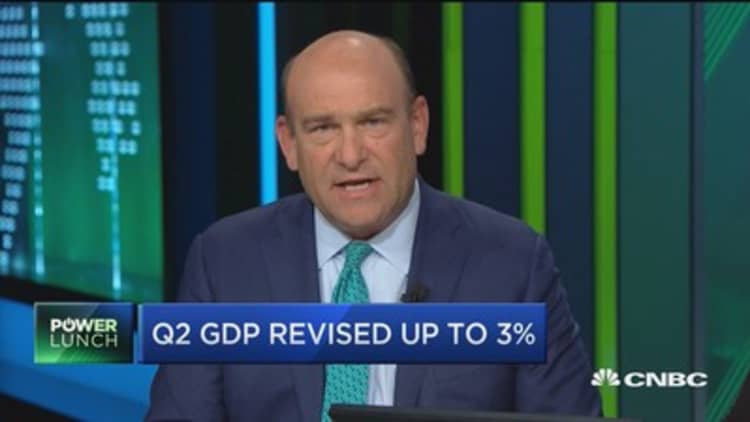
A stronger-than-expected showing by the consumer pushed second-quarter GDP growth to the long-elusive 3 percent level, and Thursday's economic data should show whether that momentum continues into the third quarter.
There is personal consumption and spending data for July expected at 8:30 a.m. ET, and spending is expected to rise 0.4 percent, up from June's 0.1 percent rate. Income is expected to climb by 0.3 percent.
Inside the second-quarter GDP data, consumer spending, which makes up more than two-thirds of the U.S. economy, grew at a 3.3 percent rate, the best in a year. That was revised up from 2.8 percent and was responsible for the bulk of the improvement.
GDP has not grown at a 3 percent quarterly rate since the first quarter of 2015. The second quarter was revised up from 2.6 percent. Economists did not adjust their third-quarter forecasts based on the data, and many are looking for a 3 percent growth rate for the third quarter.
Thursday's data also includes the core PCE price index, the Federal Reserve's favorite inflation metric. The index is expected to show a month-over-month gain of just 0.1 percent, in line with other sluggish inflation data.
But it's the consumer that could be interesting, after August consumer confidence also came in better than expected, at 122.9, despite expectations of a decline. It was the second-best level of the year.
"We've seen [consumer spending] start to pick up from the retail sales number that we saw earlier in the month," said Charlie Ripley, investment strategist for Allianz Investment Management. Retail sales gained 0.6 percent in July, the biggest increase in seven months, as consumers increased purchases of motor vehicles and spent on discretionary items.
"There has been weakness in auto sales, and we did see that start to rebound a little bit in the last report of retail sales," said Ripley.
There are also weekly jobless claims at 8:30 a.m. ET; Chicago PMI at 9:45 a.m. and pending home sales at 10 a.m.
There are also a few earnings expected. , , and Toronto-Dominion Bank report ahead of the opening bell. and Nutanix report after the closing bell.
WATCH: Harvey's impact on GDP



